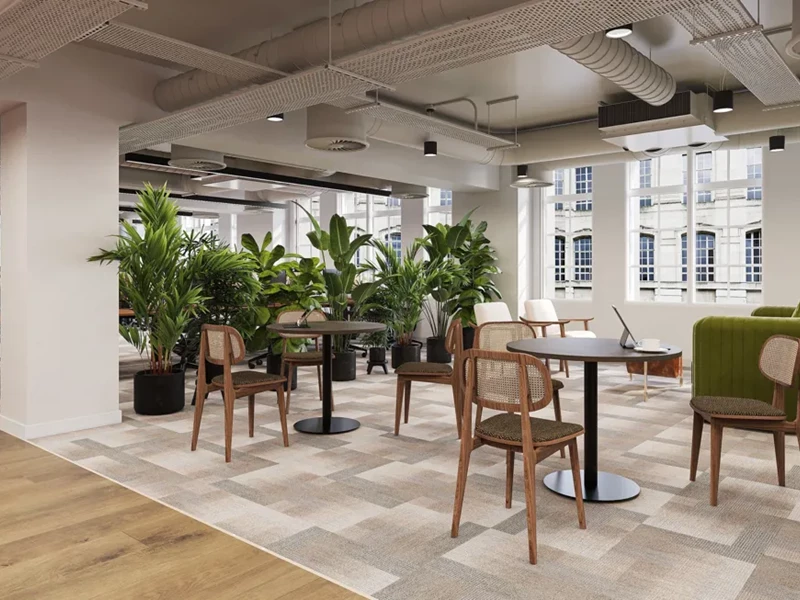Sustainability has become increasingly important in all areas of real estate, and flexible offices are no exception. ESG (Environmental, Social and Governance) is creeping further and further up the priority list of landlords, flexible office providers and occupiers. Environmental performance of a building or a company is no longer a ‘nice to have’ – it’s a must. The ‘green premium’, where sustainable buildings sell for higher prices, is very real.
So how can flexible office providers and users of this space demonstrate that sustainability is a focus? There are many different nationally and internationally recognised voluntary certifications and standards. We take a look at three of the most popular to explore how they differ.
LEED (Leadership in Energy and Environmental Design)
LEED is a certification programme developed by the U.S. Green Building Council (USGBC). It provides a set of rating systems for the design, construction, interior design, core and shell and operation and maintenance of buildings. It can be used for domestic and non-domestic buildings to determine the level of sustainability performance of a building and drive improvements.
The building’s environmental impact and performance are evaluated by using a whole-building approach to sustainability. Credit points are awarded for nine categories, for example, water efficiency and energy and atmosphere. Depending on the total number of credit points, buildings can qualify for four levels of certification: certified, silver, gold or platinum. The landlord’s design team collects the data and forwards it to the USGBC.
LEED has been specifically developed and adapted to suit the North American market and is a direct competitor of BREEAM in the UK. Increasingly it is becoming more widely used outside of North America due to multinational companies looking for consistency over global portfolios.
BREEAM (Building Research Establishment Environmental Assessment Method)
BREEAM is a performance-based assessment method and certification scheme for operational non-domestic buildings. It is used by property owners, managers and occupiers to determine the current level of sustainability performance within property assets and drives the identification and uptake of improvement initiatives, but landlords are generally responsible for implementing the certification process.
The assessment process reviews a performance against nine key sustainability categories: management, health and wellbeing, energy, transport, water, resources, resilience, land use and ecology and pollution. Licensed examiners go on-site to analyse the evidence against the credit criteria and they then forward the report to BRE (Building Research Establishment).
BREEAM is particularly popular in the UK as it is better adapted to UK legislation. Again, BREEAM can be used throughout the lifecycle of a building with different certification options covering BREEAM New Construction, BREEAM Refurbishment and BREEAM-in-Use.
ISO 14001 Environmental Management
ISO is an independent, non-governmental membership organization and the world’s largest developer of voluntary International Standards. ISO have developed thousands of internationally recognised standards covering best practice products and services. In particular, ISO 14001 is an internationally recognised standard for Environmental Management Systems (EMS)and sets out the requirements that an organisation can use to improve its environmental performance and to manage environmental risk.
ISO does not use a points system, and instead, the standard provides a management framework which can be tailored for different organisations.. An advantage of this is that there is less ‘gaming the system’. There is the risk that with a credits/points system, decisions are made primarily with the view of gaining more credits/points, rather than with long-term sustainability in mind. ISO 14001 is built upon a foundation of continual improvement, driven by regular audit and senior management engagement.
ISO is also different to BREEAM or LEED because either the landlord or the occupier of building can choose to implement it. It is a management system certification and not a building certification and can be scoped to cover just building operations at one extreme, to the entire organisation and all its outputs at the other extreme.
Which certification should I get?
If you are an occupier, you should look into ISO by default, as it is the only one of the three that is suited to occupiers. If you are landlord, the answer is complex and depends on many things, such as the your desired outcomes, location, the characteristics of your buildings, etc., so it is important to get the right advice. To find out more about sustainability, please contact Tanya Broadfield.







